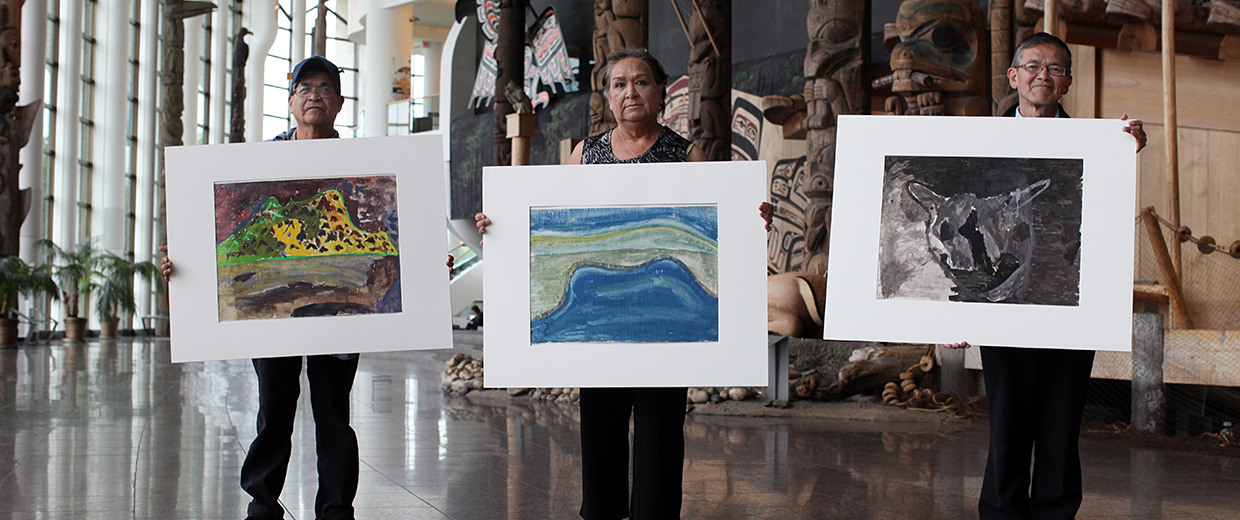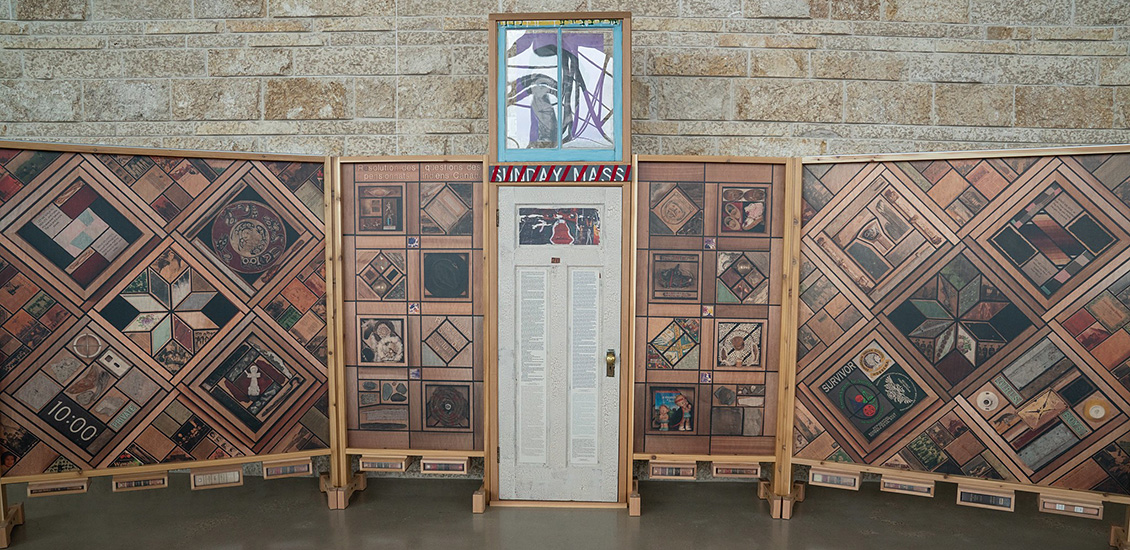The Witness Blanket, a travelling exhibition from the Canadian Museum for Human Rights, features a full-scale photographic replica of the original Witness Blanket, a powerful art installation by Indigenous master carver Carey Newman. The art installation honours the resilience of Survivors of the Indian residential school system.
Inspired by a woven blanket, the installation incorporates hundreds of items from residential schools, churches, cultural sites, and communities across Canada. Each item represents an individual story, creating a strong collective narrative of loss, strength, reconciliation and pride.
The exhibition invites visitors to bear witness, reflect on the legacy of residential schools, and consider their own role in reconciliation.
The Witness Blanket, an exhibition based on the art of Carey Newman and developed in collaboration with, and circulated by, the Canadian Museum for Human Rights (Winnipeg, Manitoba).
Explore the Witness Blanket at witnessblanket.ca.
Watch the documentary film at CINÉ+
Picking Up the Pieces: The Making of the Witness Blanket
Duration: 55 minutes
Presented in English with French subtitles.
Content Guidance: This documentary contains coarse language and detailed accounts of physical and psychological abuse.
The documentary film Picking Up the Pieces: The Making of the Witness Blanket follows master carver Carey Newman as he and his team travel over 200,000 kilometres across Canada, visit 77 communities, meet over 10,000 people. They welcome more than 800 objects into their care, which will become part of a 12-metre-long cedar artwork honouring the children of the residential school era. Collected from residential schools, churches, and government buildings, each recovered object has a story to tell, and each Survivor has something to say. Narrated by the artist, the film weaves Survivors’ stories with Carey Newman’s personal journey, examining how art can open our hearts to the pain of truth and the beauty of resilience.
Picking Up the Pieces: The Making of the Witness Blanket
Special programming
Survivor Truths: Half-day school visit
February 10 to May 2, 2025
Combine your visit to The Witness Blanket exhibition with a meaningful learning experience, through the Survivor Truths: Residential Schools, Art, and Reconciliation school program. This half-day program includes a self-guided exploration of the exhibition, hands-on activities that explore the history of residential schools and the path to reconciliation, and a screening of the documentary film Picking Up the Pieces: The Making of the Witness Blanket at CINÉ+.
Program details
Grades:
Ontario – Grades 7 to 12 (Only groups in these grades are eligible.)
Quebec – Secondary 1 to 5 (Only groups in these grades are eligible.)
Dates: February 10, 2025 to May 2, 2025
Time: Monday to Friday, offered twice a day (morning and late morning)
Duration: 4 hours
Group size: 35 (students and teachers)
Cost: This program is free with Museum admission.

Survivors of Alberni Indian Residential School, left to right, Chuck August, Gina Laing, and Dennis Thomas of Port Alberni hold up their paintings at the Canadian Museum of History.
Photo by Dave Chan.
Survivor Truths: Residential Schools, Art, and Reconciliation
The legacy of residential schools affects every Canadian. For over 100 years, an estimated 150,000 Indigenous children were placed in residential schools in a joint initiative between the federal government and Christian churches. The school system aimed to sever ties to community, language, culture and land to assimilate Indigenous nations into a Christian Canada. Many students at these schools were subjected to abuse. The intergenerational effects of this history are ongoing, as Survivors and Indigenous communities work to heal and renew ties to land, language and culture.
Students in this program will participate in a series of guided activities focusing on the powerful role of land in this history and in reconciliation efforts. This program was developed in partnership with Indigenous artist, master carver, filmmaker, and intergenerational Survivor Carey Newman (Ha̱yałka̱ng̱a̱me’), and a group of Survivors from the Alberni Indian Residential School on Vancouver Island. It uses art created by these Survivors when they were students at the school in the 1950s and early 1960s as inspiration for reflections on Indigenous relationships to land, residential school history, colonialism, and one’s own place in Canada’s road to reconciliation.
Support: If you are a residential school Survivor or family member in need of emotional support, a national crisis line is available 24 hours a day, seven days a week: 1–866-925-4419.
Photo at top of page:
By Aaron Cohen, CMHR
